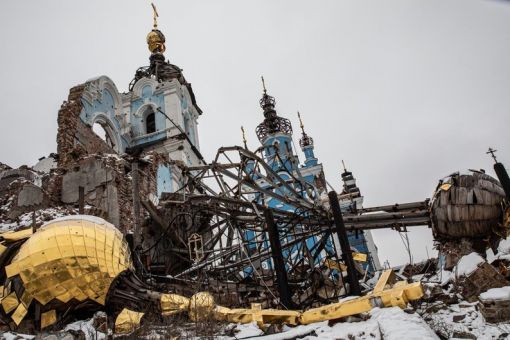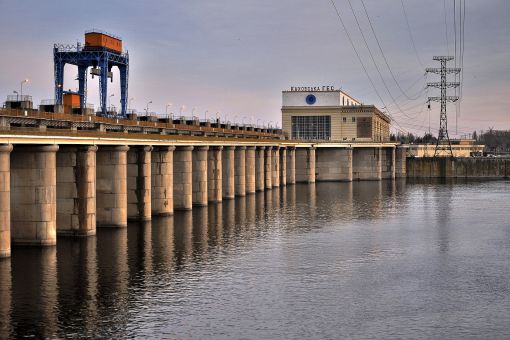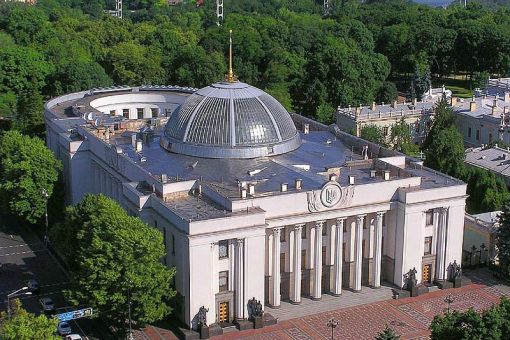 23.07.2024
23.07.2024
Cultural heritage is an indispensable component of a nation's identity and historical memory. It embodies centuries-old traditions and achievements in art, architecture, and science, reflecting the unique path of societal development. In the context of armed conflicts and military aggression, the protection of cultural heritage sites becomes paramount, as these sites often become targets of attacks aimed at undermining the cultural identity and morale of a nation.
Ukraine, with its rich history and cultural diversity, possesses a vast number of cultural heritage sites that are of great value not only to the Ukrainian people but to all of humanity. However, since the beginning of the full-scale invasion of the Russian Federation in February 2022, these sites have been under serious threat. Numerous museums, historical buildings, monuments, and archaeological sites have been damaged or destroyed due to hostilities.
The documentation of damage is crucial for documenting war crimes, which can serve as evidence in international courts; planning future restoration work and assessing the necessary resources; attracting international support and funding to protect and restore cultural heritage; creating a historical record for future generations about the scale of destruction; and raising awareness among the global community about the problem of the destruction of Ukraine's cultural heritage. According to the Ministry of Culture and Information Policy, as of May 6, 2024, there has been a further increase in the number of damaged cultural heritage sites as a result of Russian aggression. As of this date, the total number of destroyed or damaged sites has reached 1073, an increase of 11 compared to the previous report. Of these, 125 are sites of national significance, 871 are of local importance, and 77 are newly discovered cultural heritage sites.
The Anti-Corruption Headquarters, as part of the "Pact Providence" project using the Truepic app, conducted a large-scale study of the state of cultural heritage sites in Ukraine that were damaged due to Russian aggression. The organization collected data from regional state administrations across the country, which allowed for the creation of a comprehensive picture of the damage and destruction of cultural monuments.
We have created a ranking of regions based on the losses of cultural heritage sites. The ranking is challenging, as each oblast has uniqueness and value, but we decided to show the largest quantitative indicators depending on the region's losses. Therefore, the ranking looks as follows:
1. Kharkiv Region: 279 damaged cultural heritage sites, including 12 museums, 2 archaeological sites, 6 monuments and newly discovered monuments of monumental art, 63 historical sites, and 196 architectural and urban planning monuments.
2. Donetsk Region: 127 damaged sites, including 66 historical, 55 architectural, 4 monumental art, and 2 archaeological. Of the 32 museums at the beginning of the war, 14 are now located in temporarily occupied territory.
3. Kherson Region: The exact number of damaged sites is not specified, but the total number of cultural heritage sites in the region is 145. The calculation of damaged sites is significantly complicated by the occupation of part of the region.
4. Odesa Region: 116 damaged cultural heritage sites, including 18 monuments of architecture and urban planning of national significance and 5 museums.
5. Chernihiv Region: 75 damaged objects, including 44 monuments of architecture, urban planning, landscape architecture, 24 cultural heritage sites, and 7 museums.
6. Zaporizhzhia Region: 46 damaged immovable cultural heritage objects and 4 museum institutions. Approximately 70% of the region’s territory is temporarily occupied.
7. Mykolaiv Region: 45 damaged objects, including 6 museums.
8. Lviv Region: 36 immovable cultural heritage objects have been damaged or destroyed due to hostilities.
9. Luhansk Region: 34 damaged objects, including 30 immovable cultural heritage sites and 4 museum buildings. All objects are located in occupied territory or the zone of hostilities.
10. Kyiv Region: 31 damaged objects, including 5 destroyed museums and 26 damaged cultural heritage sites.
11. Sumy Region: 26 damaged cultural heritage sites, including 16 architectural, 8 historical, and 2 archaeological. Additionally, 2 museum buildings were damaged.
12. Poltava Region: 12 objects were damaged, of which 6 belong to cultural infrastructure and 6 to cultural heritage, according to the Poltava Regional State Administration since the beginning of the full-scale invasion.
13. Khmelnytskyi Region: 10 architectural monuments were damaged as a result of enemy shelling. The damage is being documented by cultural heritage protection authorities by compiling an Act of Inspection of the technical condition of the object.
14. Zhytomyr Region: 4 cultural heritage sites were damaged, including 1 of national significance and 3 of local significance, located in Korosten and Zhytomyr districts.
15. Zakarpattia Region: 2 objects were damaged - Volovetsk House of Culture and Volovetsk Adult Library.
16. Cherkasy Region: The Nine-Arch Bridge, part of the national monument "Park and Park Structures" (Synytsia village, Uman district), was damaged.
Vinnytsia Region: 1 damaged object – Mykhailo Kotsiubynsky Literary and Memorial Museum in Vinnytsia.
Kirovohrad Region: 1 damaged object – Onufriivka School No. 1, a local monument of urban planning and architecture.
An analysis of the damage to cultural heritage sites across Ukrainian regions paints a picture of massive losses and heroic efforts to preserve them. Kharkiv Region has become the epicenter of a cultural tragedy, losing 279 priceless objects. Among them are magnificent architectural monuments that have shaped the city's face for centuries, museums that have preserved the region's history, and archaeological treasures that have revealed the secrets of the past. Donetsk and Odesa regions have also suffered heavy losses: both have suffered the destruction of over a hundred cultural heritage sites. Chernihiv Region, an ancient land of princely times, has 75 damaged monuments, including pearls of architecture and landscape architecture.
Lviv Region, despite its relative distance from the front line, has also suffered, losing 36 objects, which testifies to the ruthlessness of the Russians towards cultural values throughout the country. Luhansk Region has suffered a particularly tragic fate, where 34 damaged objects have ended up in the occupied territory, cut off from the possibility of restoration and preservation. The same problem exists in the Kherson Region, as the majority of the region is occupied, there are damaged or destroyed monuments, but there is no access to them, so the destruction has to be recorded based on the remaining information available from the occupiers. Kyiv, Sumy, Zaporizhzhia, and Mykolaiv regions have suffered significant losses, missing dozens of historical monuments.
Even in relatively calm regions, such as Zakarpattia or Cherkasy, the war has left its mark on the cultural map. Although Ternopil, Ivano-Frankivsk, and Bukovyna regions have not recorded direct damage, the very fact of the threat looms over every historical object in Ukraine. Each lost monument is an irreplaceable part of our shared history, each damaged museum is a broken connection between generations.
However, the situation with Dnipropetrovsk, Volyn, and Rivne regions, which refused to provide information, citing national security concerns, is particularly alarming.
“Such a position is problematic, as transparency in matters of damage to cultural heritage is critical for documenting war crimes, planning restoration work, and drawing international attention to the problem of cultural genocide,” comments Serhiі Mytkalyk, Chairman of the Board of the Anti-Corruption Headquarters, a lawyer. “The openness of this data is necessary to form a complete picture of the destruction, which can serve as significant evidence in international courts and help bring those responsible for the destruction of Ukraine's cultural heritage to justice. In addition, such information is key to effective planning of restoration work, assessing the necessary resources, and attracting international aid. How data dissemination on the destruction of cultural heritage can negatively impact national security is unknown.”
It is also important to note that documenting damage to cultural heritage is an integral part of preserving the historical memory of the consequences of the war for Ukraine. Data openness will also help prevent the spread of disinformation and manipulation regarding the state of cultural objects. Therefore, it is critical to call on all regional administrations to cooperate and provide full information about damage to cultural heritage.
The Anti-Corruption Headquarters, together with other civil society organizations, continues to record the destruction of cultural heritage in Ukraine and cultural objects in general due to Russian shelling. We do this thanks to the "TruePic" app from Microsoft, which allows you to store metadata, and therefore use the data as evidence.




